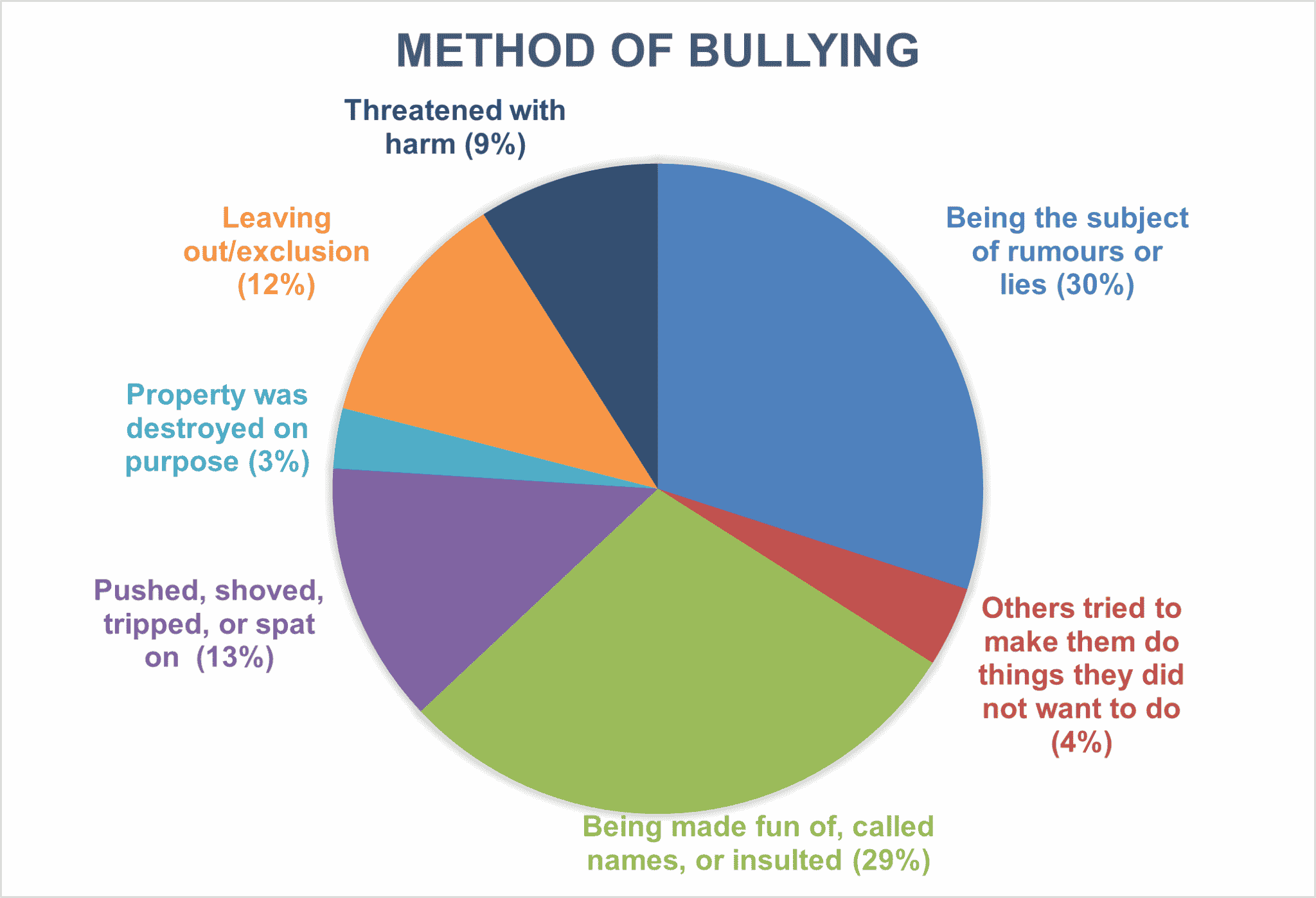From September 2024 Devon county council’s Equality, diversity and inclusion team will be monitoring the BPRI reporting system. For further information and the new link please visit their website. For all the services and support you have had access to over the last two years, you are now able to purchase EDI consultancy time, which can include incident support, EDI pupil forums, data reviews and support with your Equality duty. Please visit the Devon education services shop for further details.
There are various definitions of bullying, but in essence, all definitions include three core elements. These are:
- unwanted aggressive behaviour
- observed or perceived power imbalance
- repetition or high likelihood of repetition of bullying behaviours
These elements help determine whether an incident is bullying or another type of aggressive behaviour or both.13
Our DCC definition is that bullying has occurred when an assailant targets and individual on two or more occasions.
When reporting incidents of bullying the reason behind the bullying should always be understood, whether it stems from racism, prejudice of general human differences. If the bullying stems from racism or prejudice, it should be recorded and reported as such, as the main focus of the incident.
Bullying affects all children, including those who are bullied, those who bully others, and those who witness bullying. The effects of bullying may continue into adulthood and many studies demonstrate that those who are involved with bullying are more likely to have mental health difficulties in their adult lives.
- There is not a single profile of a child involved in bullying. Children who bully can be either be well-connected socially or marginalised and may be bullied by others as well. Similarly, those who are bullied sometimes bully others.
- Solutions to bullying are not simple. Bullying prevention approaches that show the most promise confront the problem from many angles. They involve the entire establishment’s community—children, families, administrators, teachers, and staff such as bus drivers, nurses, cafeteria and front office staff—in creating a culture of respect.
- Bystanders, or those who see bullying, can make a huge difference when they intervene on behalf of someone being bullied. Empowering children to recognise if something isn’t right and to inform an adult will go a long way to protect children from bullying. This can only happen if establishments educate against it being ‘tattle tailing’ and ‘snitching’.
- Studies also have shown that adults can help prevent bullying by talking to children about bullying, encouraging them to do what they love, modelling kindness and respect, and seeking help. Demonstrating that it is vital the parents and guardians are provided with the information to have those discussions at home too.13

Source 13
Understanding bullying
More than 1 in 4children report they have experienced bullying within 12 months, with 41% of these children saying they have experienced bullying within the last month1. While spending 10 hours or more on social media a week can double the likelihood of 12-15-year-olds being in receipt of cyber bullying.2
Parents or guardians, staff, and other caring adults have a role to play in preventing bullying. They can:
- help children understand bullying. Talk openly about what bullying is and how to stand up to it safely. Develop the child’s understanding that is it not acceptable and where to get help.
- keep the lines of communication open. Check in with children and listen to them often. Know their friends, ask about school, and understand their concerns.
- encourage children to do what they love. Special activities, interests, and hobbies can boost confidence, help children make friends, and protect them from bullying behaviour.
- model how to treat others with kindness and respect. Showing them that it is okay to ask for help, even as an adult.
Helping children to understand bullying
Children who know what bullying is, can better identify it and talk about bullying if it happens to them or others. Children need to know ways to safely stand up to bullying and how to get help.
- Encourage children to speak to a trusted adult if they are bullied or see others being bullied. The adult can give comfort, support, and advice, even if they can’t solve the problem directly.
- Talk about standing up to bullies safely. Give tips, like using humour and saying “stop” directly and confidently. Talk about what to do if those actions don’t work, like walking away.
- Talk about strategies for staying safe, such as staying near adults or groups of other children in unknown environments.
- Educate children in tolerance.
- Remind parents and guardians that they can start these conversations too. Keeping the lines of communication open, will help a child to feel safe to share information.13
Further support and advice
- My safety plan – A DCC exemplar and guidance on creating a safety plan to reduce anxiety and help a child to feel safe.
- Top Anti-bullying tips
- United Against Bullying Programme
- November: Anti-Bullying Week Resources
- Anti-bullying alliance
- Childline – bullying advice 0800 1111
- NSPCC – bullying and cyber-bullying
- Family Lives offers support for the whole family